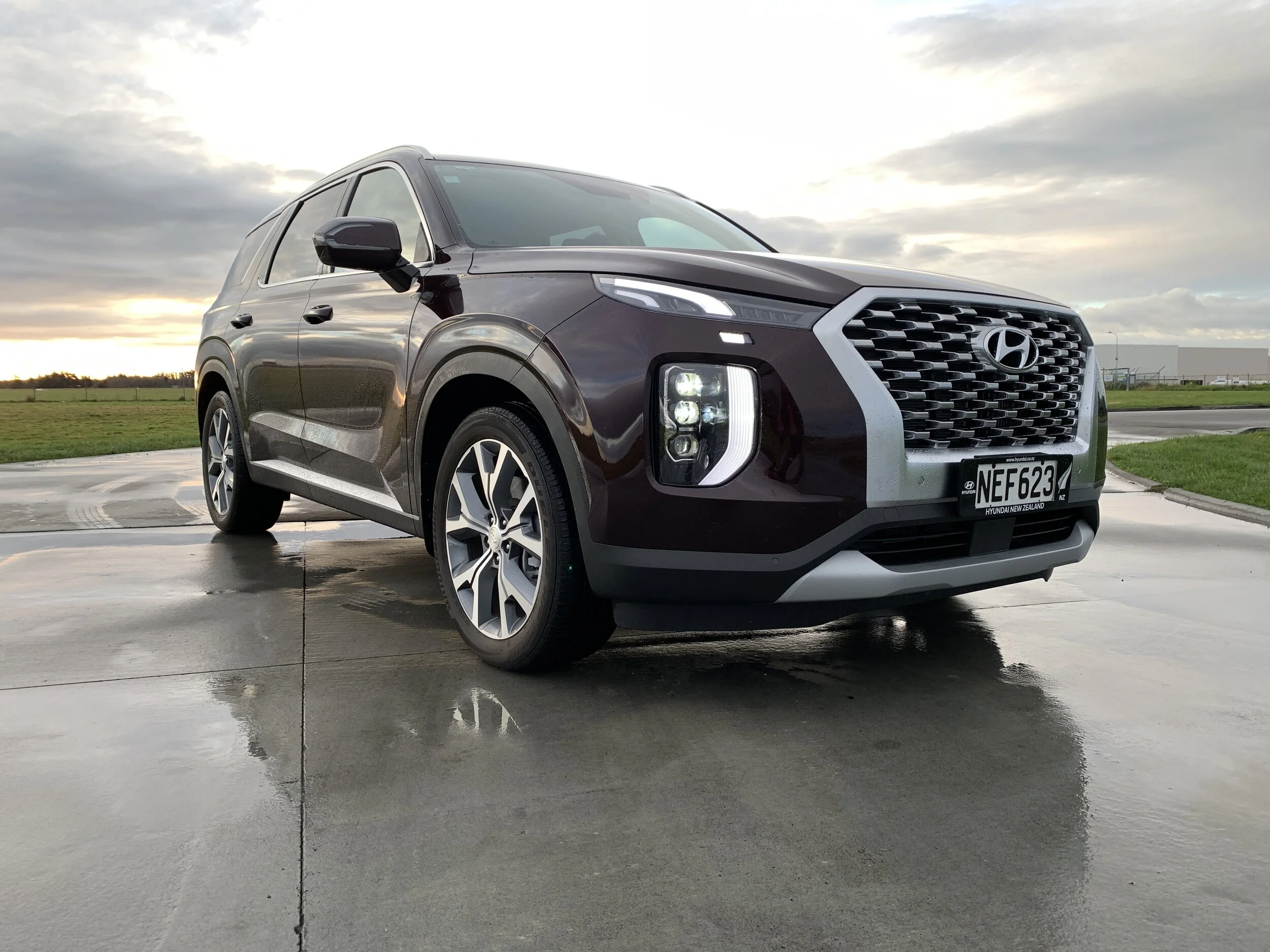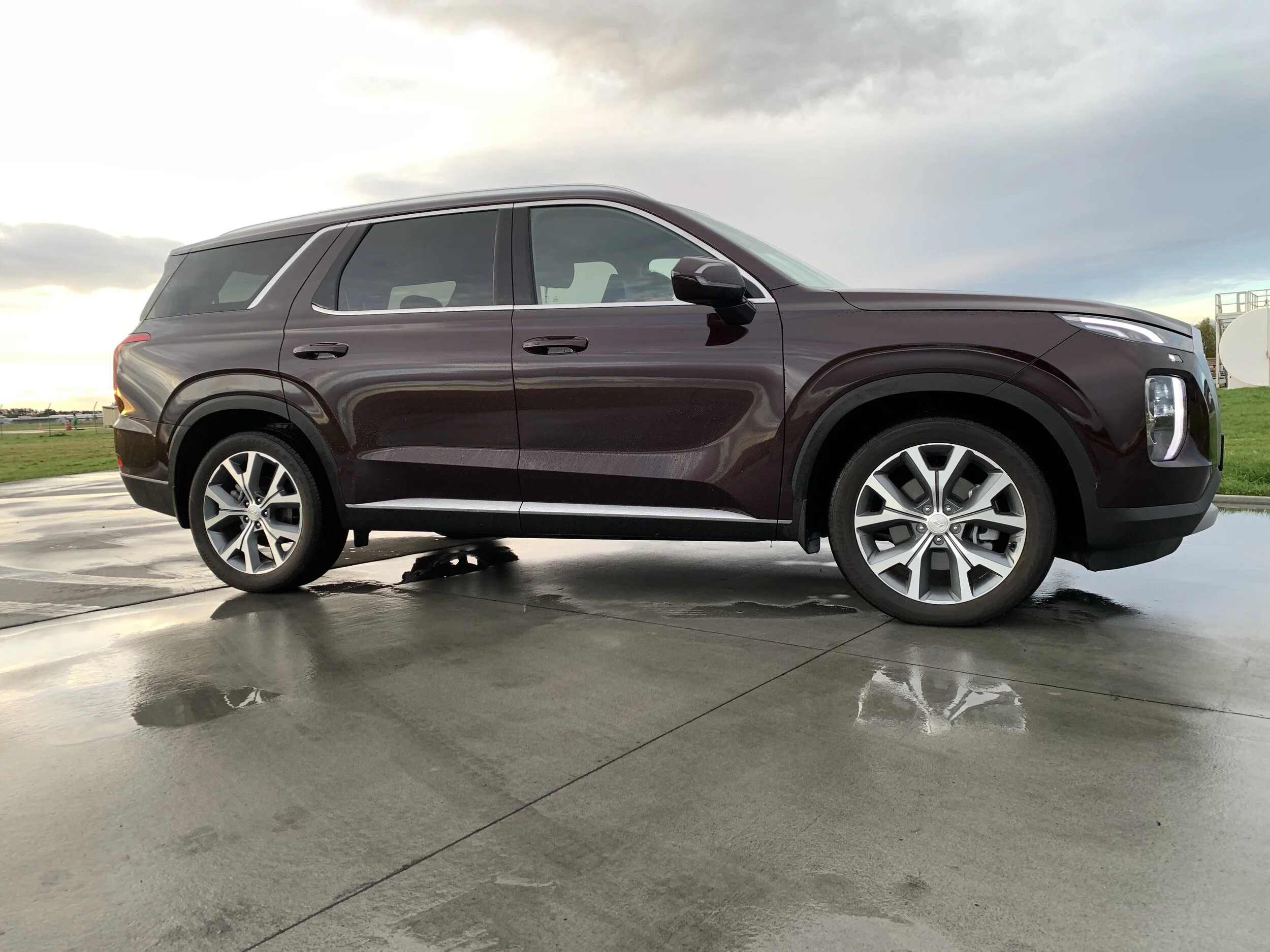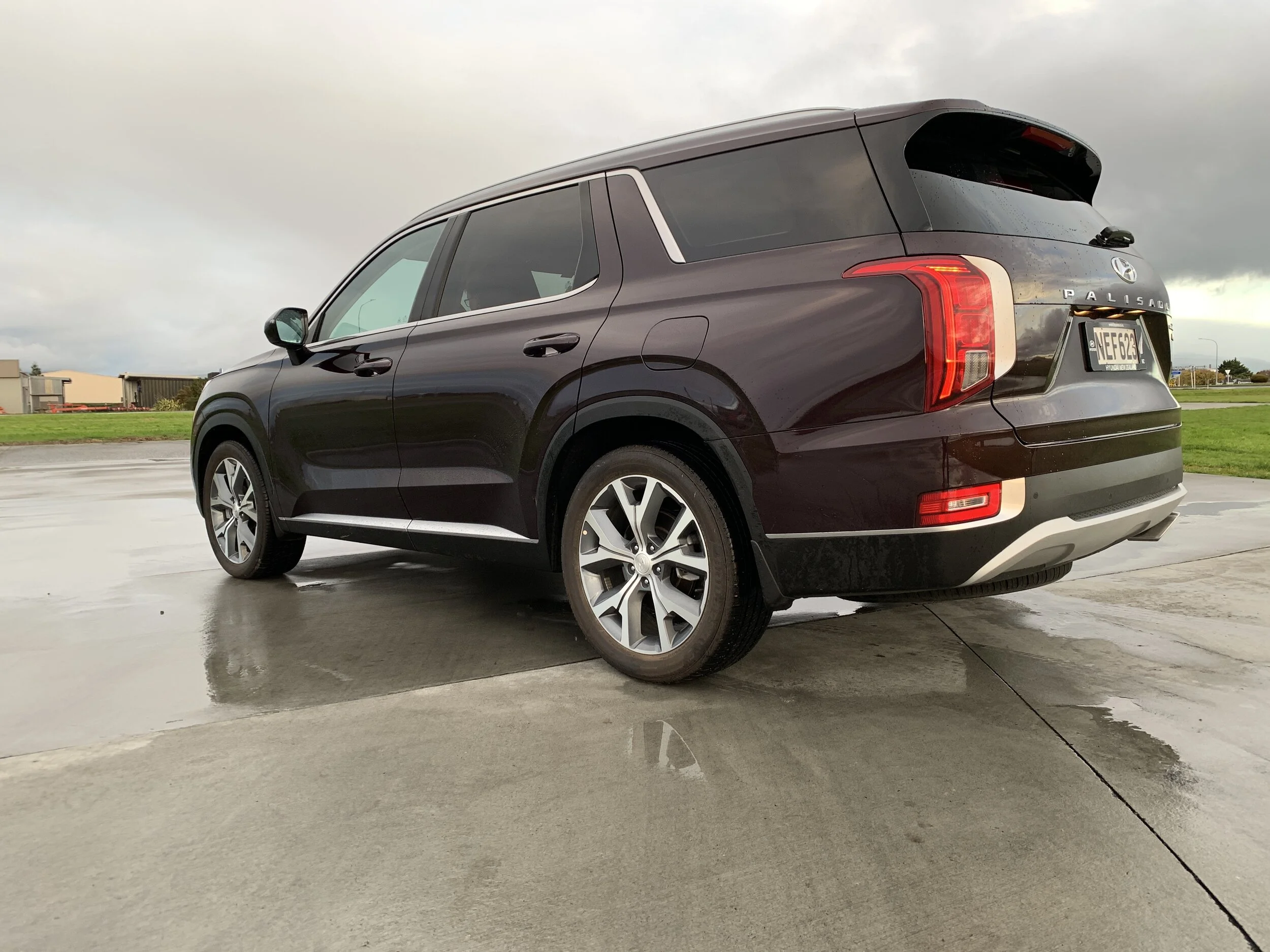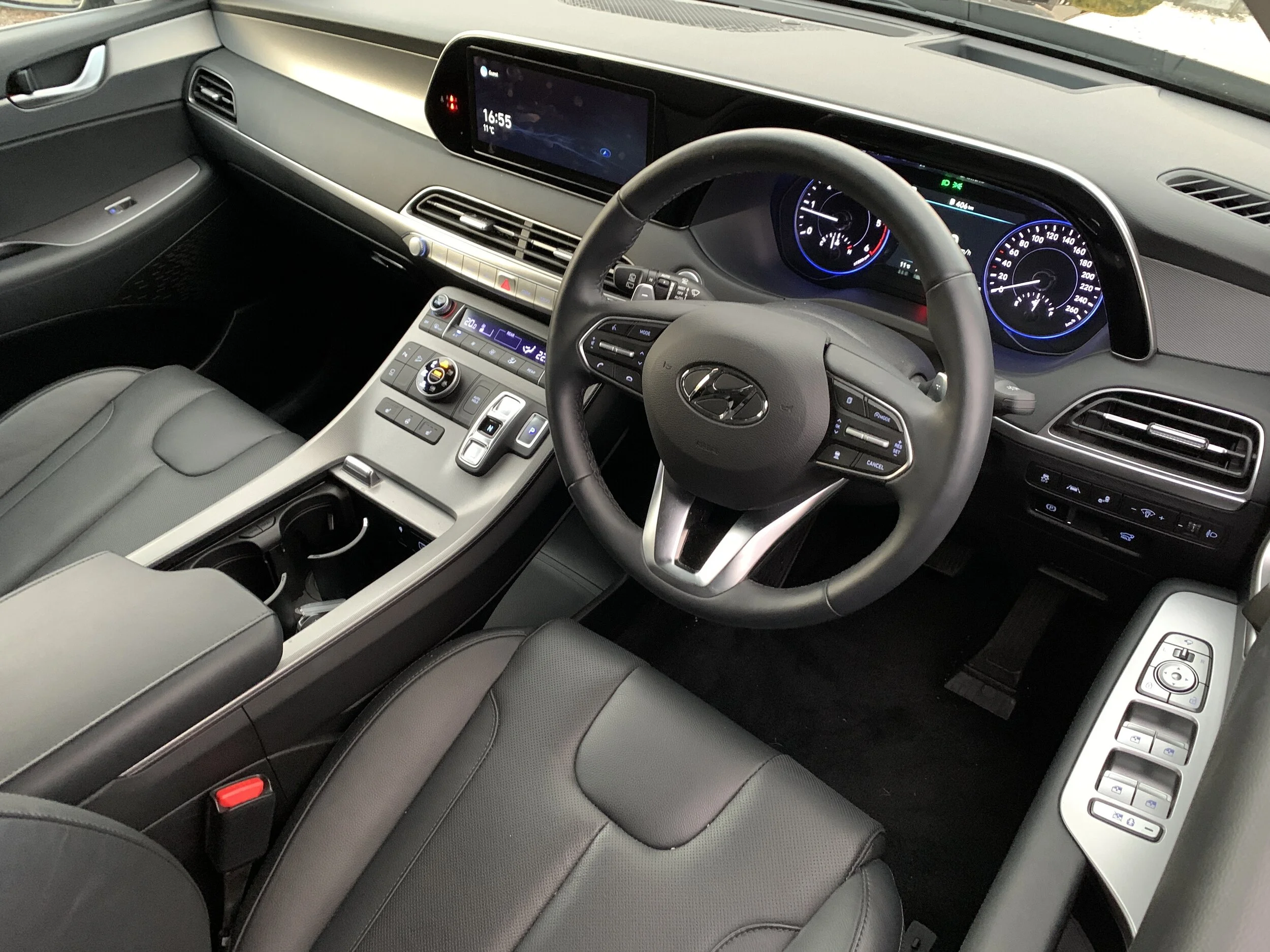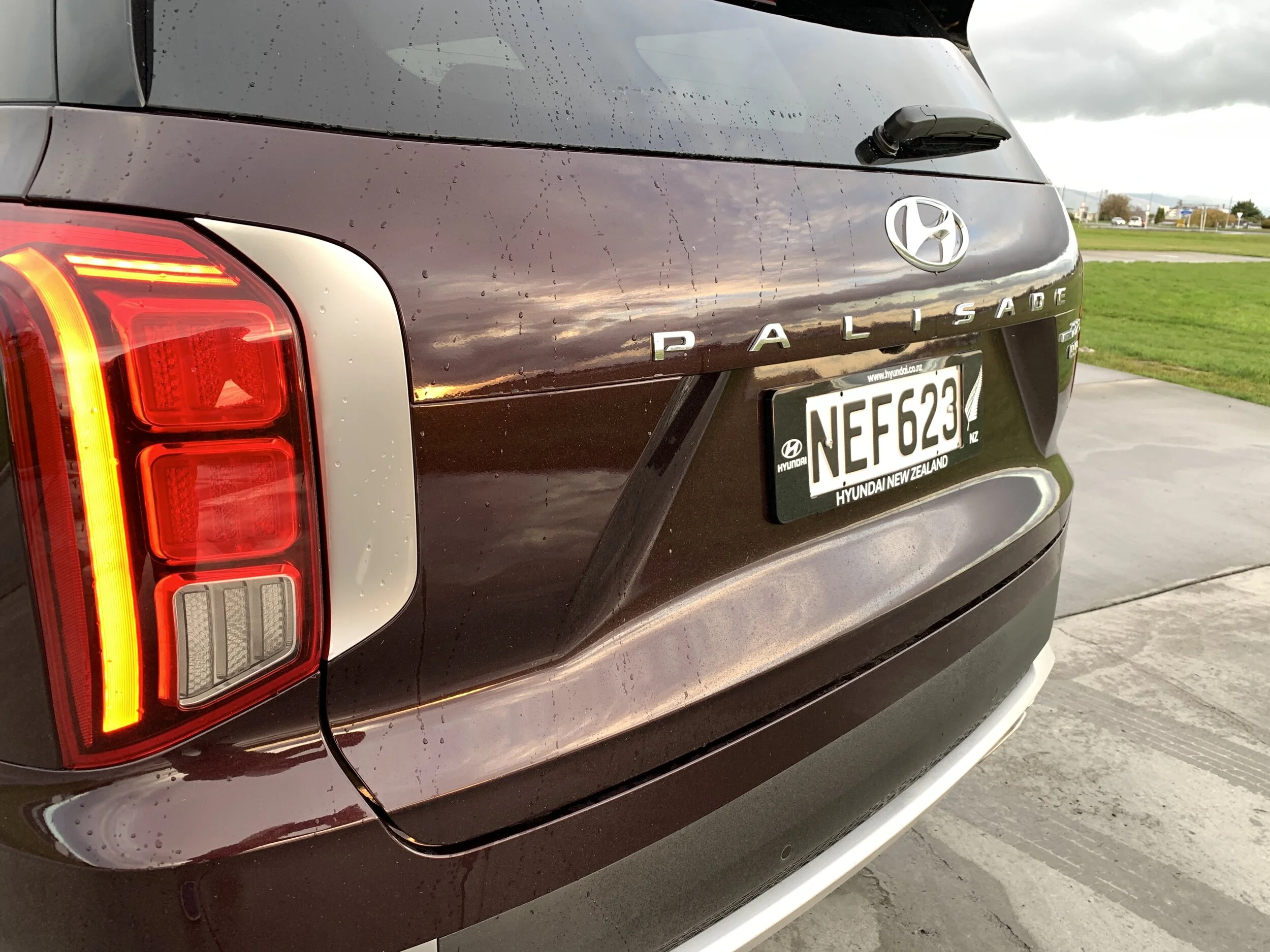Hyundai Palisade Elite diesel review: It's the American way
/Is a full-sized eight-seater from the Korean giant’s US division as big a deal as it appears?
Price: $106,990.
Powertrain and economy: 2.2-litre diesel inline-four with 147kW/441Nm, eight-speed automatic, all-wheel-drive. Claimed combined fuel consumption 7.3L/100km, 195 gm/km CO2.
Vital statistics: 4980mm long, 1750mm high, 1975mm wide, wheelbase 2900mm, ground clearance 203mm, 20-inch alloys.
We like: Roomy interior, well-provisioned, good ride.
We don’t like: Frontal styling, challenging positioning and pricing when it’s a generation behind Santa Fe.
BACK in the late 1960s a guy who worked for a chain of movie theatres in Texas came across a way to increase sales of popcorn and drinks.
Having identified that people didn’t want to go for two-for-one deals and other specials in concern that’d make them look greedy (plus there was the hassle and the effort of carrying multiple items), he discovered those same customers were happy to buy in when those multiple items were delivered in one single, gigantic serving.
David Wallerstein did well and, once on the board of directors of a certain fast food franchise, he pitched the idea to its owner, who took some convincing, but was ultimately won over.
Once McDonalds and Ray Kroc got on board, ‘supersizing’ simply … well, supersized. Today it has become a way of sales life, and not just for fast food.
There’s a good reason why Hyundai called its first big sports utility after a largish city in New Mexico. The car was foremost aimed at the United States market. They liked the taste, but ultimately started to ask if it could come in a slightly larger serving. Thus the Palisade (yeah, a weird WTF change of naming convention going on here) was born. Hyundai took a Santa Fe, kept the platform and most of the technology but super-sized through the expedient of bunging on a significantly larger body. Yum yum.
The ‘bigger bucket’ vehicle was originally conceived for North America, where it was first built. The Middle East also got a taste for it, so that became the first export market. Those two big left-hand-drive were enough for Palisade to earn its keep. But then Australia petitioned for it to be reconfigured and its pestering paid off. New Zealand interest has made it an ANZAC act, but for now it’s just us and them insofar as right-hook access goes.
We’ve gone big with three variants - Elite, Limited and Limited Nappa Edition – which suggests Hyundai NZ can see massive market opportunity, and why not?
Although it is fast ramping up as an electric vehicle provider, Hyundai here is foremost winning with sports utilities; the Tucson and the Santa Fe together account for a huge annual sales count and both are high-achievers when measured against their opposition. Having another SUV in the mix conceivably does no harm.
But if you’re preparing to go big … well, be prepared to go BIG and not just in terms of its epic proportions.
Anything in this league is going to stand out, of course, and Korean car brands are rarely shy about being brash, but let’s just say Team America’s involvement takes this car in a decisively different, but not decidedly better, styling direction to other Hyundais of the moment. As much as it stands out – and let’s agree it puts on a very … erm .. bold … face (and rear end, for that matter) - the signatures aren’t all that familial. A good thing or bad?
The big cachet of ‘Seoul going Stateside’ is the cabin’s provision of eight seats – a rare treat even among large SUVs – each of which is, unsurprisingly, genuinely useable for even the larger proportioned, but more American influences also show in a sensational cupholder count – I found 16 and wasn’t sure if I’d come up short – a massive centre console and generous door pockets, seven USB ports, four 12V sockets, one-touch auto-up power windows for all four doors, a push-to-talk intercom system to address wayward third-row occupiers (don’t worry, it’s one-way) and twee novelties such as one-touch indicators which can be programmed to flash three, five or seven times, antique valve-amplifier graphics when tuning different radio stations and an embedded selection of relaxation background soundtracks (beware: The ‘soft rain’ soundtrack might make you want to pee), mixed in with more serious-minded stuff like an air con system catering to all three rows.
A sensor key with push-button start, rain-sensing wipers, front and rear parking sensors, a rear camera, tyre pressure monitors, a full-size spare tyre are also standard and safety equipment includes radar cruise control with stop-start, lane-keeping assistance, rear cross-traffic alert, and blind-zone warning with intervention if you’re about to cut across someone in an adjacent lane.
It’s all good stuff yet, remarkably, because this vehicle is based off the previous generation of the Santa Fe – meaning the one we said goodbye to some months ago – rather than the newest here now, it actually is a bit behind the times by brand standard.
Look at the ‘other’ SUV and you’ll see, for instance, that it has more driver assists still and some additional tech fixings, including an induction pad for recharging your phone. Also, Santa Fe now has speed sign recognition technology whereas Palisade uses the old, and flawed – because often data is out of date - approach of sending out speed warnings based on embedded navigation data.
As sold as the safety kit is, there’s no locally-relevant certification. Officially, the Palisade will forego an ANCAP crash test rating. That’s not to say it would be found wanting, but it’s unclear if it would achieve a four- or five-star rating. These days the latter requires a centre airbag, while Palisade doesn’t have, but Santa Fe does.
Anyway, back to the main attraction. That the American import stands out as a bigger kind of Big Mac is no trick of the eye. Okay, it’s not in the RAM or Silverado category, but at 19cm longer, 7cm wider and 40cm taller than the donor, you’re looking at Korea’s equivalent of a LandCruiser wagon.
It certainly fills a driving lane but isn’t as cumbersome in urban driving as you might think. The commanding driving position, light steering and a plethora of parking assists are here to help, but also useful is that the turning circle isn’t much larger than for the Santa Fe (11.8m versus 11.4m), so it’s easier to manoeuvre in tight spaces than the size suggests. Still, you need take care picking an angle park, if only because if the neighbours are too careless you’re going to be troubled getting the doors open. Parallel parking bays avoid that problem, though it also very much fills those, not just length-ways but also across.
The bonus of this big-ness is that expansive cabin; it’s accurate to say this vehicle is less space efficient than space proficient. Where-ever they happen to be placed, occupants have a vast amount of legroom, headroom and shoulder room.
Compared to Santa Fe, you’re further away from the second and third row of seats because there’s more distance between the front and rear wheels. Palisade has noticeably more room shoulder-to-shoulder as well.
The only off-putting aspect, from an adult perspective, about being relegated to the very back row is that the process of accessing and egressing risks being a touch indecorous, as it involves tilt-sliding the mid-row seat forward to create enough space, which is easier said than accomplished.
The gap is decent - Hyundai cites 220mm of ‘boarding clearance’ – but the second-row seat, like the back one, is heavy. The other issue for any big person sent to the back row is that the shape of the C and D pillars restrict visibility of the world outside. Still, just that it can make-do for adults and is likely to be considered awesome by kids is a plus. Three ISOFIX attachment points (two in the second row and one in the third), plus four top-tether points for their seats means it can be creche friendly, too.
You can run the Palisade in full school bus mode and still have decent cargo room. Hyundai cites 311 litres’ space with the third row in place but you’d swear they’ve under-rated their measurements. Drop that back seat into the floor and you’re creating a 704 litre party zone. Bang down the second row as well and … well, it’s truly huge. Both rows in the eight-seater have a 60:40 split, so you could conceivably bung in long items and keep an outboard seat occupied.
The driving position is pretty pleasing, all in all; comfortable with a command style view out on the road ahead. The cabin’s basic layout isn’t too dissimilar to the Santa Fe’s in general layout, but detailing differences are numerous. Build quality is fair rather than outstanding and trim materials likewise; the leather looks dull and lacks plushness and some of the plastics miss the mark. Still, the instruments and dials are clear both at night and during the day, with neat and crisp graphics.
Palisade provisions with a 3.8-litre petrol V6 as an alternate to the diesel. A bigger-lunged petrol than provisions in Santa Fe, it’s by far the top choice Stateside. Obviously there’s confidence it can find some supporters here as well. Conceivably, though, it should be a minority choice simply because diesel is so established as a market preference at this level and it’s also the drivetrain that provision with all-wheel-drive.
The 2.2-litre has enjoyed massive support in Santa Fe over the years, but it is the older and less peppy version than that in the Santa Fe, is in marriage to a less advanced transmission and is being asked to haul a bulkier vehicle. So, notwithstanding the powerplant’s decent pedigree, partnering to Palisade is akin to adding a couple of extra weights to an already well-stocked barbell.
It’s not utterly overwhelmed, and becomes relatively settled at cruise, but the slightly languid step-off even in ‘Sport’ mode and the effort it puts into overtaking, plus the transmission’s reluctance to be hurried, suggests there’s clearly there’s more exertion going into the lift now. That also shows in fuel burn – the cited on-paper deficit of 1.2 litres per 100km is somewhat greater in real world driving – and when, hitching up a load. Caravan and boat owners will be dismayed, surely, that the bigger choice’s towing rating is capped at 2200kg, so 300kg short of Santa Fe.
Basically, you get impression that if Hyundai had a larger-capacity diesel in its armoury – and it hasn’t – then it might well have considered it.
SUVs, by their very nature aren’t ever really that dynamic and Palisade isn’t pushing to change that view. You wouldn’t say body control belies it sizes, and aside from the Terrain mode system which adjusts engine mapping and the tuning of the all-wheel drive system, it is meted some very decent rubber. Both act as positive ingredients. Yet it’s no BMW X5-beater and there’s more roll and pitching and rolling here than with a Santa Fe. Braking-wise, too, it does ask for some forethought. The high point of the set-up is the ride. It soaks up the lumps and bumps with aplomb.
The core genius of the super-sizing formula is that it entices you to buy bigger than you probably need because that looks to be a better value option. Does that hold true here?
Though the more upmarket seven seater Limited has its own appeal, the Elite diesel on test is surely the strongest candidate for broadest consumer consideration and I suspect even it will struggle. From every evidence I can muster, NZ is the dearest place to secure this model. Buying in the cheapest Palisade – not the one on test - alone requires a significant spend over the asking price for the dearest Santa Fe, a newer, more modern SUV. One extra chair for at least another $10,000? That’s not how Ray Kroc’s crowd found a way to

